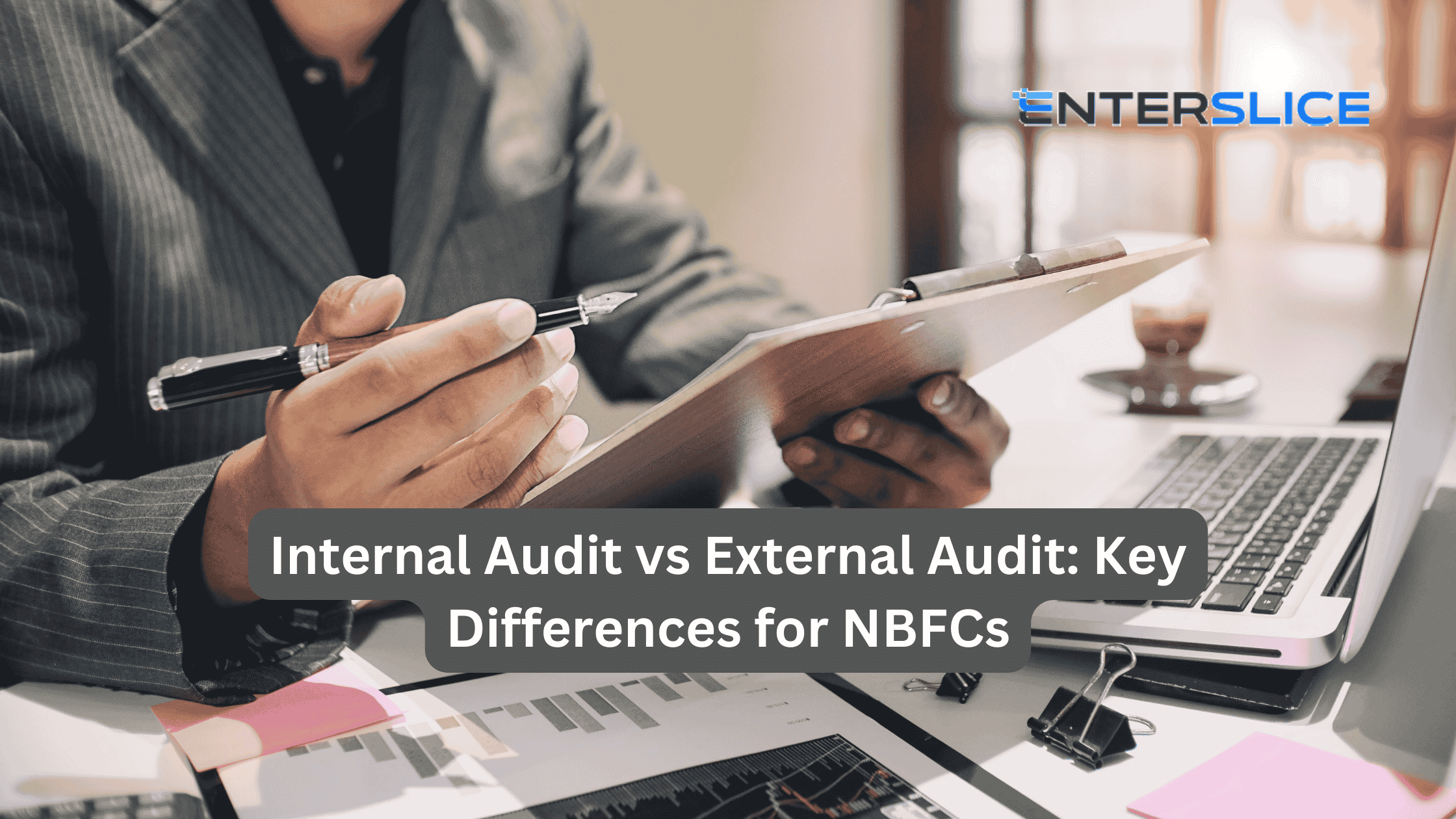Non-Banking Financial Companies (NBFCs) play a critical role in the financial ecosystem, bridging the gap between traditional banking and financial inclusion. As NBFCs grow, maintaining robust financial governance becomes essential. Two key processes ensure this: Internal Audits and External Audits. While both are crucial, they serve different purposes and have distinct approaches. Understanding these differences can help NBFCs streamline their financial operations and maintain compliance.
What is an Internal Audit?
Internal audit is an independent, objective assurance and consulting activity conducted by an organization’s internal team or an appointed third-party expert. Its goal is to evaluate and improve the effectiveness of risk management, control, and governance processes.
Key Characteristics of Internal Audit for NBFCs:
- Frequency: Conducted regularly (monthly, quarterly, or annually).
- Purpose: Focuses on identifying risks, improving internal controls, and ensuring operational efficiency.
- Scope: Broad and determined by the organization. Includes financial controls, compliance with regulations, and operational assessments.
- Responsibility: Managed by internal employees or outsourced professionals specializing in NBFC Audit Services.
- Audience: Findings are reported to the management and board of directors.
What is an External Audit?
External audit is conducted by an independent third party, usually mandated by regulatory bodies, to verify the accuracy of an organization’s financial records and ensure compliance with statutory requirements.
Key Characteristics of External Audit for NBFCs:
- Frequency: Conducted annually or as required by regulatory authorities like RBI.
- Purpose: Provides an unbiased opinion on the financial statements’ accuracy and compliance with legal standards.
- Scope: Narrower, focusing mainly on financial reporting and statutory compliance.
- Responsibility: Performed by registered auditors who are not associated with the organization.
- Audience: Results are shared with stakeholders, regulators, and the public (where applicable).
Key Differences Between Internal Audit and External Audit for NBFCs
| Aspect | Internal Audit | External Audit |
|---|---|---|
| Objective | Focuses on risk management, operational efficiency, and internal controls. | Ensures financial accuracy and statutory compliance. |
| Conducted By | Internal team or outsourced audit professionals. | Independent auditors or audit firms. |
| Regulatory Requirement | Optional but strongly recommended for robust NBFC governance. | Mandatory as per RBI and statutory requirements. |
| Audience | Internal stakeholders such as management and the board. | External stakeholders, regulators, and investors. |
| Scope | Broad and includes operational, financial, and compliance aspects. | Primarily focuses on financial reporting and regulatory adherence. |
| Frequency | Conducted periodically throughout the year. | Conducted once a year or as required. |
| Focus Areas | Risk mitigation, process improvement, fraud detection. | Verification of financial statements and adherence to laws. |
Importance of Both Audits in NBFCs
For NBFCs, both internal and external audits play significant roles in ensuring financial health, transparency, and compliance. Here’s why:
1. Strengthening Internal Controls
Internal audits help NBFCs identify inefficiencies, mitigate risks, and optimize processes. This is particularly important given the regulatory complexities NBFCs face under RBI guidelines.
2. Ensuring Statutory Compliance
External audits ensure that NBFCs adhere to statutory regulations like RBI’s guidelines for NBFC Compliance Audits. This safeguards them from penalties and reputational damage.
3. Enhancing Stakeholder Trust
External audits provide stakeholders with confidence in the NBFC’s financial integrity. Internal audits, on the other hand, reassure internal stakeholders about operational efficiency and risk management.
4. Supporting Strategic Decisions
Internal audits offer management actionable insights, while external audits validate financial credibility, aiding informed strategic decision-making.
5. Detecting Fraud and Errors
Internal audits are proactive in identifying irregularities early, whereas external audits verify that no material misstatements exist in the financial statements.
How NBFCs Can Leverage NBFC Audit Services
NBFCs can outsource their internal and external audits to professionals specializing in NBFC Audit Services. These services provide:
- Expertise in navigating regulatory complexities.
- Tailored audit frameworks that meet RBI standards.
- Comprehensive compliance reviews, including NBFC Compliance Audits, to ensure seamless operations.
Collaborating with experienced auditors can save time, reduce errors, and ensure that NBFCs remain ahead of their regulatory requirements.
Conclusion
Both internal and external audits are vital for NBFCs, serving complementary purposes in governance and compliance. While internal audits focus on improving internal processes and mitigating risks, external audits ensure financial accuracy and adherence to regulations. Together, they strengthen NBFCs’ operational and financial framework, enabling them to thrive in an increasingly competitive and regulated market.
For NBFCs, investing in robust NBFC Audit Services and adhering to NBFC Compliance Audits can significantly enhance efficiency, transparency, and stakeholder confidence.
FAQs
1. What is the difference between internal and external audits for NBFCs?
Internal audits focus on improving processes, mitigating risks, and ensuring operational efficiency, while external audits verify financial accuracy and compliance with statutory requirements.
2. Are internal audits mandatory for NBFCs?
While not mandatory, internal audits are strongly recommended to strengthen internal controls, detect fraud, and improve overall governance.
3. How do NBFC Audit Services benefit businesses?
NBFC Audit Services provide expertise in navigating regulatory requirements, conducting compliance checks, and ensuring adherence to RBI guidelines for seamless operations
Also Read
- ► How to Choose Between MSME and NSIC Registration for Your Business?
- ► Motilal Oswal Small Cap Mutual Fund: Invest in Your Future Now
- ► Unveil the Latest Kerwin Frost Clothing Collection
- ► Online Ceramics The Streetwear Revolution Redefining Urban Fashion
- ► The Ultimate Guide to Buying Your First 999 Club Hoodies
- ► Vlone T-Shirts and Best Vlone V Logo Hoodies for winter Session
- ► Why Limousine Service San Diego is Perfect for Every Occasion
- ► Adventure Activities in Lithuania: Hiking, Biking, and Beyond
- ► Piaget: A Legacy of Elegance, Innovation, and Timeless Luxury
- ► Chrome Hearts || Chrome Hearts Hoodie || Official Store
- ► 6PM Season | 6PM Clothing Official Store | Up To 40% Off
- ► PetGroomly: Premium Pet Grooming Services in Jaipur
- ► Indian Business Visa Guide: Everything You Need to Know
- ► Indian Visa from Cameroon: Everything You Need to Know
- ► Tourist Visa for India: Everything You Need to Know





